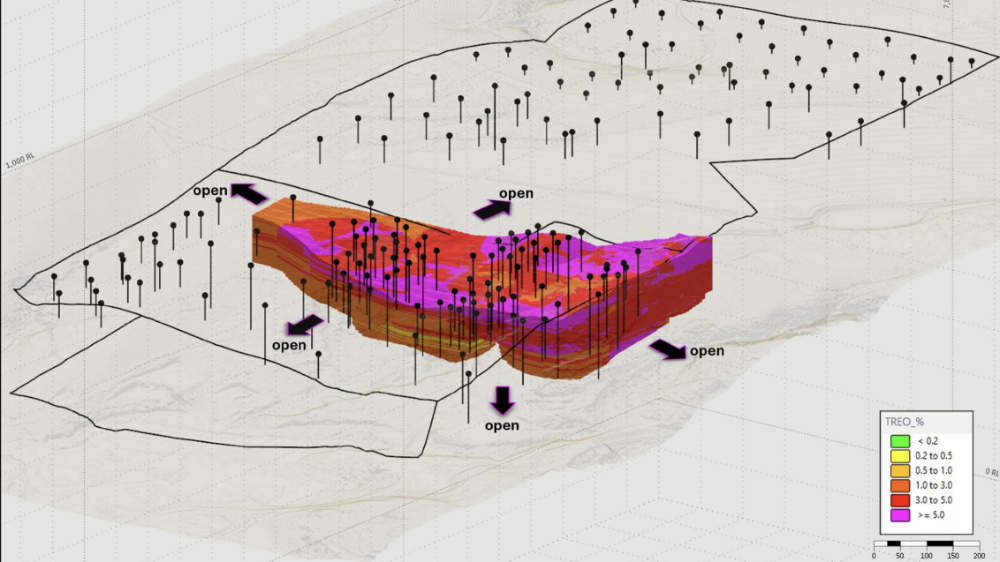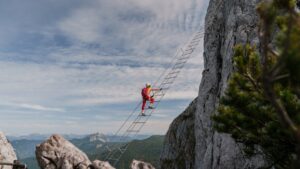Geophysics to guide St George’s Araxá resource expansion drilling

St George Mining’s geophysics program will guide future resource expansion drilling at its Araxá project in Brazil. Pic: Getty Images
- St George Mining’s geophysics program will seek new zones of REE and niobium mineralisation
- Mineralisation at Araxá is open in all directions with less than 10% of the project seeing significant drilling
- First assays from ongoing resource drilling expected this month
Special Report: St George Mining has launched a new phase of geophysics at its Araxá niobium and rare earths project in Minas Gerais, Brazil, to support resource expansion drilling.
The new program combines high resolution drone magnetics and passive seismic surveys in a bid to identify enriched zones of mineralisation and structures that are a control on mineralisation.
This will assist St George Mining (ASX:SGQ) with the targeting of further high-grade mineralisation from the existing zones confirmed by historical drilling that returned grades of up to 8% niobium, 33% total rare earth oxides and 32% phosphorus.
While Araxá already hosts significant resources of 40.6Mt grading 4.13% TREO and 41.2Mt at 0.68% niobium, mineralisation is also open in all directions and less than 10% of the project has been effectively drilled.
“We are excited to kick off these advanced geophysical programs at Araxá. The tight line spacing and innovative techniques being deployed are a step-change in the resolution quality of our datasets,” SGQ executive chairman John Prineas said.
“The new surveys are designed to provide detail on the lateral and depth potential of the mineralised system.
“With less than 10% of the project area effectively tested by drilling and very limited drilling beyond 100m from surface, the new geophysical dataset will give invaluable information for exploration targeting and resource definition drilling.”
He added the modern geophysical program could provide the basis to further unlock substantial value at the project by identifying additional high-grade zones of mineralisation.

Geophysics program
The company has started the high resolution airborne magnetic survey at 25m spaced lines and with 270 flight kilometres planned.
It is expected to provide detailed maps of the magnetic properties of basement rocks, allowing the company to identify structural features, lithological boundaries, higher-grade mineralisation and potential mineralised zones.
In coming weeks, SGQ will also carry out a horizontal-to-vertical passive seismic survey on a 50m by 50m spacing to deliver critical subsurface information on the depth to fresh basement and weathering profiles, filling key gaps that magnetic data alone cannot resolve.
Listen to more from SGQ: St George next to niobium production
Depth of weathering is a critical component to understanding the grade distribution of the mineralisation as higher grades are associated with the weathered rock/regolith.
Combining these geophysical datasets with direct geological information obtained from drilling will create a robust, layered model of the subsurface.
This will enhance the accuracy and confidence of the company’s geological interpretations, enabling the identification of previously unrecognised targets and structural controls on mineralisation.
A major drilling campaign is also underway with more than 10,000m of auger, reverse circulation and diamond drilling completed over about 16 weeks.
It is aimed at growing resources with first assays due this month.
This article was developed in collaboration with St George Mining, a Stockhead advertiser at the time of publishing.
This article does not constitute financial product advice. You should consider obtaining independent advice before making any financial decisions.
Related Topics

UNLOCK INSIGHTS
Discover the untold stories of emerging ASX stocks.
Daily news and expert analysis, it's free to subscribe.
By proceeding, you confirm you understand that we handle personal information in accordance with our Privacy Policy.








